|
|
Post by Infinity Blade on Oct 27, 2017 1:43:32 GMT 5
I think head-on ramming is unlikely too. Jaw locking, as cool as that may sound, doesn't really make sense for a sperm whale to do against an O. megalodon (especially if it was like the modern one), so yeah, I think you're right that that's not very likely either.
|
|
|
|
Post by elosha11 on Oct 27, 2017 3:13:07 GMT 5
For what it's worth, the bite marks appear more horizontally oriented across the surface of the tip of the tooth, rather vertical. This would seem to indicate that either the shark or the whale was oriented more "sideways" when the bite occurred. To me that also lessens the chance of this being a head on collision-ramming incident because in that scenario, both animals would presumably be swimming straight toward the other without being oriented in anything other than a front facing position. In other words, a straight on collision would result in vertical bite marks on the tooth more readily than horizontal ones.
Of course, this is a very simplistic analysis, predators such as Megalodon could orient their bites/attacks and/or scavenging in all types of directions. But it does seems to me that a head to head collision would more likely produce vertical "up and down" bite marks on the tooth, rather than "side to side" bite marks.
|
|
|
|
Post by elosha11 on Nov 8, 2017 22:06:35 GMT 5
Here's a large (8-9 inch diameter) and interesting whale vertebrate recently posted in 2017 at a fossil show in South Carolina, with a likely deep Megalodon bite. Normally, whenever, I see a bite mark on the circular "top" of the vertebrate (like the fake ones showing a Meg tooth artificially on the top), I suspect it's manmade because in reality those circular "tops" are horizontally placed within the whale's body, one after the other along its spine. Megalodon bites and piercing normally are along the side of the centra, which is to be expected in natural feeding activities. However, even though on the "top", this bite definitely fits the look of the shape of a deep Meg tooth bite and it certainly could occur in natural interactions, such as when the whale was already dismembered (either from predation or scavenging). Also this looks like only one tooth touched the vertebral centra, but given how little room there is between each end of the bite mark and the end of the centra, it's quite possible that only this one tooth contacted the centra, while the Meg teeth on either side of the tooth in question contacted other parts of the whale's body. Although I would think that at least the Meg's adjacent teeth would have at least scratched down the sides of the centra. The collector and the person he bought if from both seem to be a pretty serious amateur fossil collector and definitely knows his stuff. I don't think he "created" this as a fake and I don't know why any one else would either, given the original owner found it in a river and wasn't even trying to sell it. (He mentions the bite hole still has river gravel in in from when it was found in Copper River, further supporting the idea that this isn't a fake bite mark). Also I can't imagine any pathology that would produce a hole perfectly shaped like a Meg tooth. But I suppose it's possible, it's either some pathology, some other freak injury, post death damage to the bone (maybe a rock or other physical object pierced it during during fossilization), or it is rather unique and impressive Meg bite. If the latter, this really shows how deeply and powerfully Megalodon could penetrate even a large whale's vertebrate. I wish I knew how deep the bite mark pierced the vertebrate. Really no way to tell how big the shark in question is since we don't know how wide the total tooth was, as compared to the approximately 3 inch wide bite mark. So what do all of you think, bite mark, pathology, fake, or something else?? Here's the pics and then the website and the collector's comments. 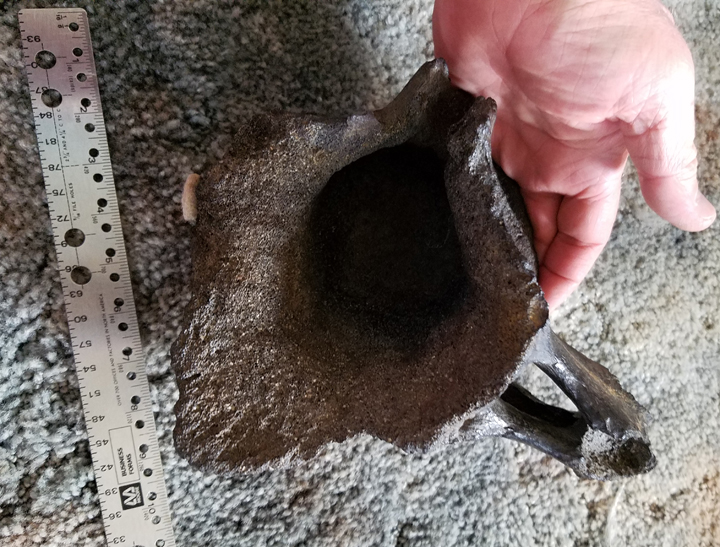 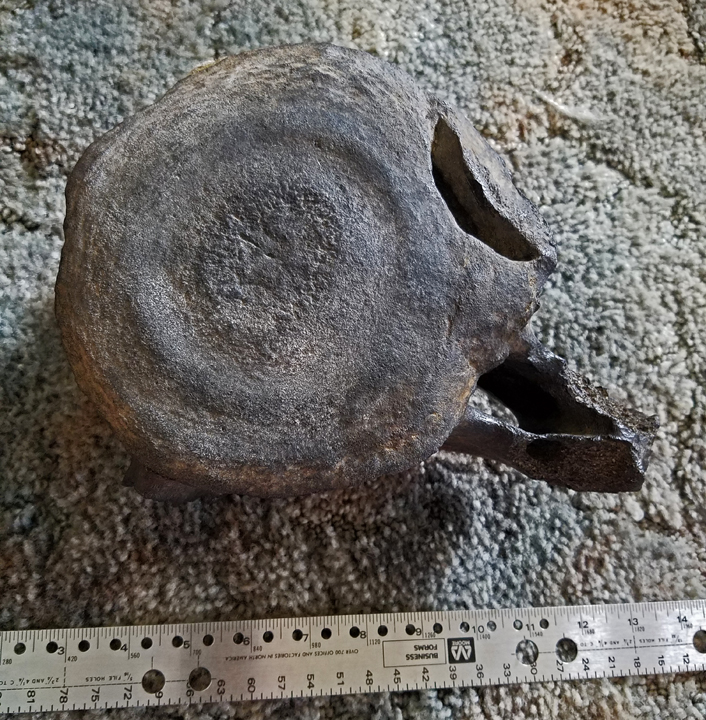 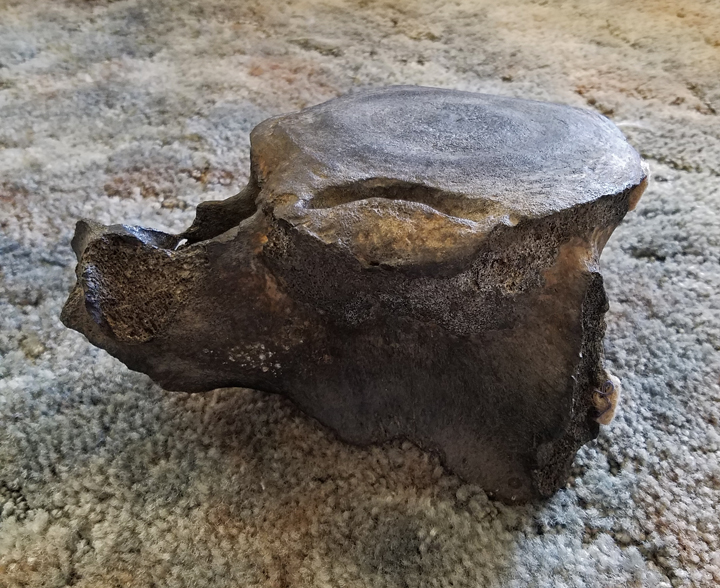 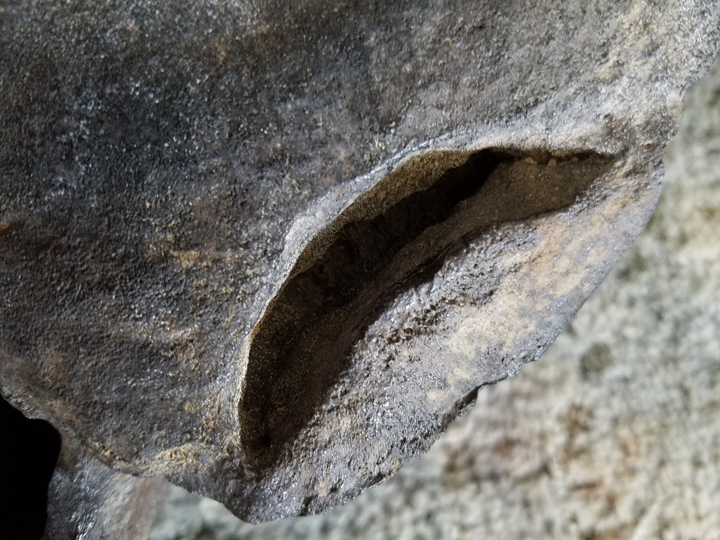 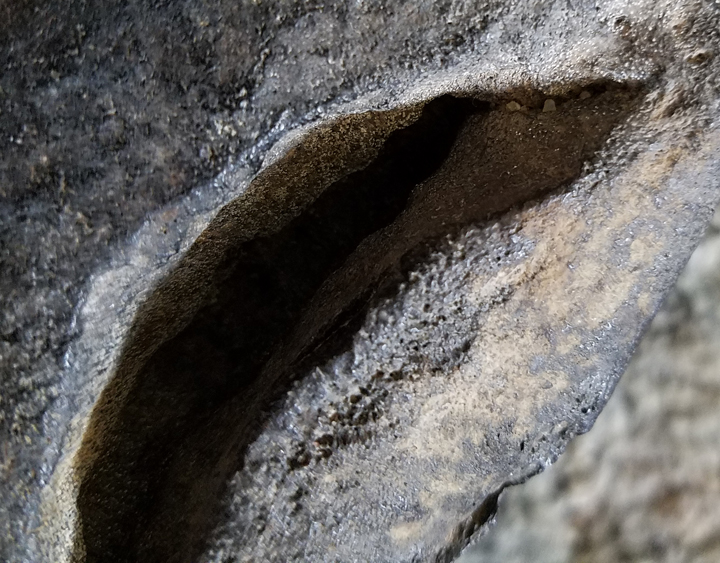 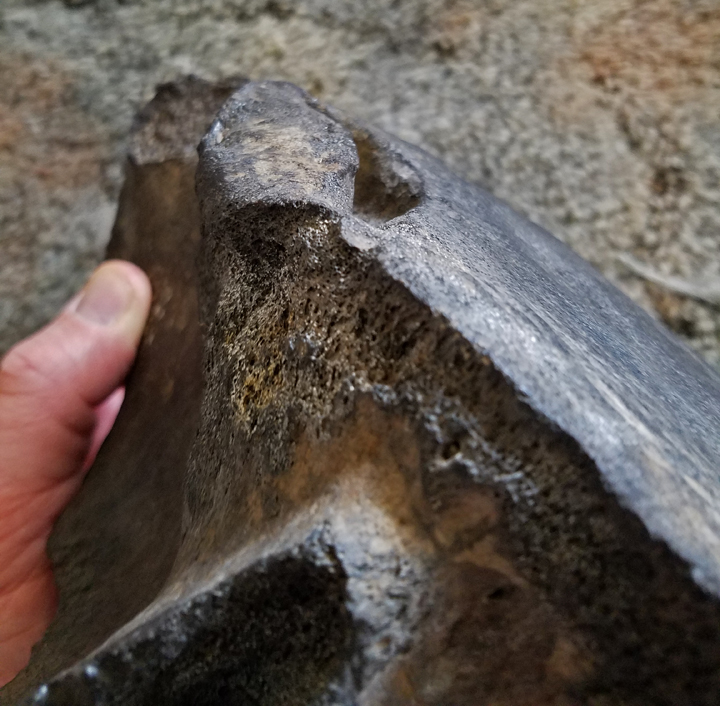 Website: www.wncrocks.com/FOSSIL%20SHOW%202-10-11-2017.htmlCollector's description: "This was my favorite find/purchase of the weekend. This is a large whale vert, not particularly attractive and it was being used to prop up the lid of another display at one table. I asked the dealer what he wanted for it and bought it. He had found it in the Cooper River years before, now retired from diving, he was selling off some of his old finds. I wanted the piece for one reason, the obvious bite damage done to the vert. If this is not a Megalodon bite, it is some odd pathology, but everyone I showed it to agreed it was definitely bite damage. I have seen many fakes over the years like the one pictured below. These things are many times sold to amateur unknowing fossil collectors claiming the vertebrae was found with the shark tooth imbedded in the vert. These are all fakes, at least all the ones I have seen. The one I have is the only one I have ever seen that has actual damage. Of course I do not have the tooth that did it and I doubt the tooth even came out of the sharks mouth, the damage was likely caused during a feeding frenzy with numerous sharks stripping the whales carcass and bones for any meat still attached. I think I might be able to find a broken meg somewhere to fit the hole!" The collector also stated for the close up pics: "A couple close ups of the bite damage, you can still see the river gravel in the hole." |
|
|
|
Post by Life on Nov 9, 2017 19:04:04 GMT 5
elosha11That wound certainly gives the impression of penetration by a Megalodon tooth. Might actually be.
|
|
|
|
Post by elosha11 on Nov 14, 2017 2:19:07 GMT 5
The approximately 25 foot long whale with its head removed, presumably from a Megalodon. Found in close proximity to large Meg tooth (also pictured below) in Shark Tooth Hill in California and examined by Dr. Chuck Ciampaglio, well known prehistoric shark expert, for Shark Week's "Sharkzilla" several years ago. 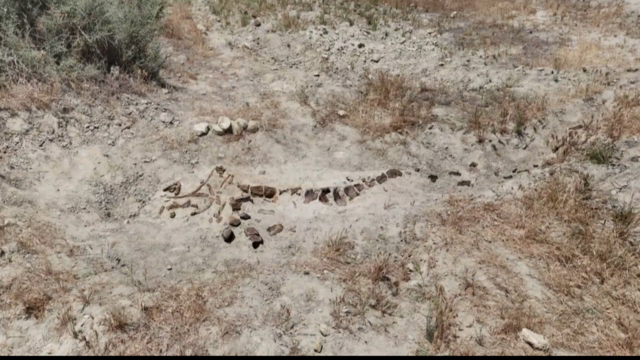 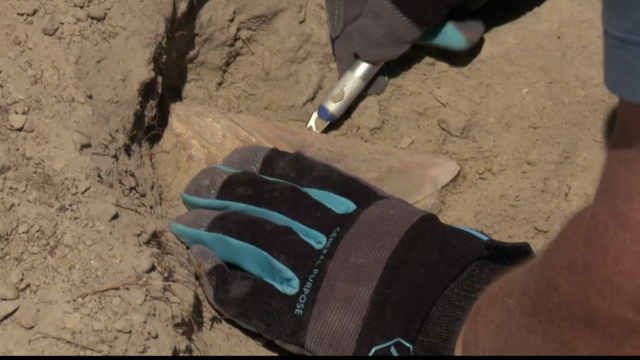 |
|
|
|
Post by elosha11 on Dec 3, 2017 0:25:02 GMT 5
|
|
|
|
Post by ohiosharkman on Dec 26, 2017 17:59:26 GMT 5
|
|
|
|
Post by elosha11 on Dec 26, 2017 20:15:11 GMT 5
^Thanks for the photos ohiosharkman. I agree, the Meg tooth matches up quite nicely with the bite mark. Please let us know if you are aware of any other shark bitten fossil bones, I'm always looking to add more to this thread.
|
|
|
|
Post by elosha11 on Dec 26, 2017 21:43:24 GMT 5
Ohiosharkman, here is a fossil whale rib with shark bite marks very similar in size and serrations markings on the one you posted.   |
|
|
|
Post by elosha11 on May 8, 2018 4:48:42 GMT 5
Here's a shark bitten fossil from ebay.  Aurora Megalodon bitten Fossil Whale Tail Vertebra, North Carolina |
|
|
|
Post by elosha11 on May 8, 2018 5:05:27 GMT 5
|
|
|
|
Post by elosha11 on May 8, 2018 8:23:13 GMT 5
|
|
|
|
Post by elosha11 on Jun 21, 2018 1:27:51 GMT 5
Here are some beautiful pics of a juvenile Meg that bit into a dolphin's vertebrae; another more typical Meg bite on baleen rib; and a whale's tail centra with a compression fracture that showed healing and may have been caused by Megalodon or another macropredator's ramming attack. All pictures are from Calvin Marine Museum's great online publication, Ecphora. I will try to attach the images as pictures to this post. Click on each picture to get a bigger image of the fossils and the written observations |
|
|
|
Post by elosha11 on Jun 21, 2018 1:31:04 GMT 5
Here's the last pic of the vertebrae with compression fracture damage.  |
|
|
|
Post by elosha11 on Jun 22, 2018 4:45:36 GMT 5
Here are three more from Ecphora.    |
|